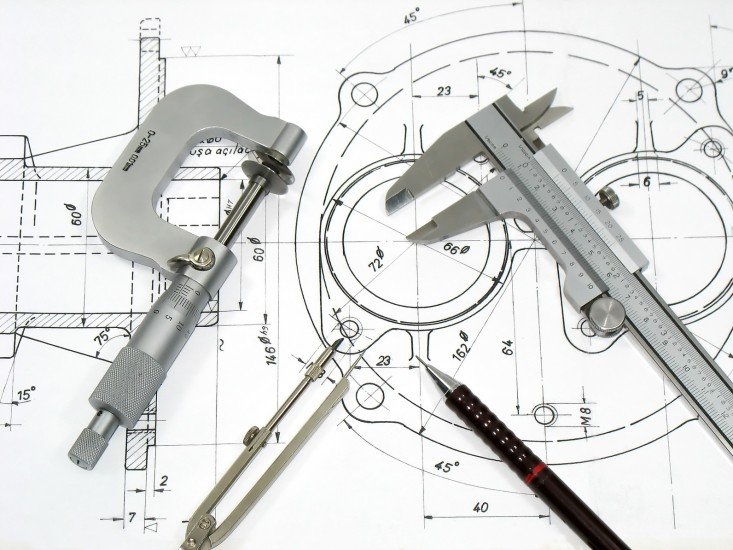EIC Transition

EIC Transition funds innovation activities that go beyond the experimental proof of principle in laboratory to support both:
- the maturation and validation of your novel technology in the lab and in relevant application environments
- the development of a business case and (business) model towards the innovation’s future commercialisation.
EIC Transition projects should address both technology and market/business development, possibly including iterative learning processes based on early customer or user feedback.
The expected outcomes of an EIC Transition project are:
- a technology that is demonstrated to be effective for its intended application (TRL 5/6) and
- a business model, its initial validation and a business plan for its development to market.
Grants of up to €2.5 million are available to validate and demonstrate technology in an application-relevant environment and develop market readiness.

Who can apply?
Single applicants (SMEs, spin-offs, start-ups, research organisations, universities) or small consortia (max 5 partners) may apply.
Applications are restricted to results generated by the following eligible projects:
- EIC Pathfinder projects (including projects funded under EIC pilot Pathfinder, Horizon 2020 FET-Open, FET-Proactive) and FET Flagships calls (including ERANET calls under the FET Work Programme).
- European Research Council Proof of Concept projects.
- European Defence Fund (EDF), including the Preparatory Action on Defence Research, research. projects, but only for proposals which are exclusively focused on civil applications (including dual use).
For Transition Challenges ONLY:
- all projects funded under Horizon 2020 or Horizon Europe
Applicants will need to demonstrate that are the owner or holder of the Intellectual Property Rights (IPR), or have the necessary rights to commercialise the results from one of these eligible projects.
The list of the projects provided below is a “best effort” indication of potentially eligible projects unless amendments, early termination and errors.
The list does not provide proof of eligibility to submit a proposal to a EIC Transition call deadline.
Is EIC Transition for you?
- Have you identified eligible project results that could be the basis for ground-breaking innovations and new businesses?
- Is this novel technology ready for the next steps towards its maturation and validation in some specific applications?
- Do you envisage building a motivated and diverse entrepreneur-lead team to develop the idea and increase its market readiness?
Before you take a decision to apply, look carefully at the criteria and objectives in the EIC Work Programme and assess if your project is in line with them.
The application form will be available in the F&T portal under the EIC transition call page.
What are the eligibility conditions for small consortia? How are these applied in relation to the legal entities established in third countries and associated countries?
For proposals already submitted and currently under evaluation, services check that the proposals still comply with the (minimum) participation conditions, e.g.:
- For multi-beneficiary proposals (3 different countries): must include at least one legal entity established in an EU member state and two legal entities established in two other EU Member States or (candidate) Associated Countries;
- For two-beneficiary proposals (2 different countries): two independent legal entities from two different EU Member State or (candidate) associated countries.
- For mono-beneficiary proposals: one legal entity established in an EU Member State or (candidate) Associated Country.
In addition, applicants can have Associated Partners (who are not members of the consortia but are additional partners for whom the applicant takes responsibility for implementing activities).
If it becomes clear that a proposal is no longer eligible, services must inform concerned applicants that their proposal is no longer eligible due to the new circumstances regarding the current status of the candidate Associated Countries in Horizon Europe.
Some examples with Switzerland as follows:
- Mono-beneficiary application from a Member State or Associated Country with an Associated Partner from Switzerland: is this proposal eligible? Yes, if all the other eligibility criteria of admissibility and eligibility are fulfilled.
- Two-beneficiary proposal (two independent legal entities from two different Member States or Associated Country and with an Associated Partner from Switzerland: is this proposal eligible? Yes, if all the other eligibility criteria of admissibility and eligibility are fulfilled.
- A proposal with at least three independent legal entities each established in a different Member State / Associated Country and with at least one of them established in a Member State. A three-beneficiary proposal with an Associated Partner from Switzerland is eligible. However, is eligible a proposal with the maximum number of beneficiaries (5 legal entities) and with an Associated Partner from Switzerland (to make a total of 6)? Yes, if all the other eligibility criteria of admissibility and eligibility are fulfilled. It would make a consortium of 5 for the consideration of the eligibility of the proposal.
For further clarifications, see FAQ "In Horizon Europe, what is the status of participants from non-EU, Associated or Third Countries?"
I would like to apply for a Transition project to further develop the results created by someone else (another project, another partner in my project, etc). What is the written evidence of the IPR agreement to be included in the proposal?
Proposals must build on results from an ongoing or recently finished project (linked project), funded from an eligible call as listed in the Work Programme and the linked project needs to be clearly identified in the first page of the proposal’s part B.
Proposals must include the confirmation that the applicants are the Intellectual Property Rights (IPR) owner or holder, or have the necessary rights to commercialise the results of the project, as described in the proposal.
Applicants that are not the owner of the result to be further developed in the proposal must provide a commitment letter from the relevant owner(s) of the result(s), which confirms the commitment of the owner of the linked project research result(s) to negotiate with you a fair, reasonable and non-discriminatory access to such results, including the Intellectual Property Rights, for the purpose of future commercial exploitation.
What is the Seal of Excellence for Transition projects? How and to whom is it given? What support is available for such Seals of Excellence?
The Seal of Excellence (only for mono-beneficiary applications from individual SMEs) is a quality label awarded to project proposals submitted to the EIC, to help these proposals find alternative funding. It certifies the value of the proposal, based on the outcome of the rigorous EIC evaluation process.
Proposals for EIC Transition (mono-beneficiary only) that were judged to deserve funding but did not get it due to budget limits will receive the Seal of Excellence. EIC Transition proposals must meet the thresholds on all evaluation criteria to receive the Seal of Excellence.
The Seal of Excellence projects can participate in activities and request up to three days of free business coaching through the EIC Business Acceleration Services.
What is the expected size and duration of an EIC Transition project?
The EIC considers proposals with a duration of up to 3 years as appropriate. .
The expected size may depend on the path chosen, the sector and amount of work proposed in the application. E.g.: for mono-beneficiary proposals, the budget may be smaller than for multi-beneficiary proposals, and certain sectors may be more expensive than others.
The minimum amount envisaged for a project is EUR 500 000. The maximum amount envisaged for a project is EUR 2.5 million.
Exceptional cases of higher amount or longer duration need to be explicitly and very well motivated and explained in the proposal.
Is participation of SMEs or industrial partners to EIC Transition consortium compulsory? Can researchers participate?
The Work Programme allows for the participation of academic partners without an SME or industrial partner. However, the evaluation will assess the “necessary high-quality expertise, capabilities and motivation to move decisively towards innovation, create a unique commercial value from the emerging technology and develop an attractive business and investment proposition”.
It is therefore encouraged that companies participate, including SMEs/start-ups, and which may include companies that did not take part in the previous consortia that originated the results.
When and how will a selected Transition project be added a portfolio of projects? Do projects have a choice? What kind of portfolio activities are expected and how will this participation be supported?
The Transition Challenge projects will be by default part of the related challenge portfolio. If deemed necessary, the Transition Open projects may be allocated to at least one Thematic or Challenge Portfolio.
How much should applicants invest upfront in the market aspects (competition, business case, business model) for the proposal and how much this would be developed in the project itself?
The applicants should have sufficient preliminary business case/business model and market analysis for the application area(s) they have in mind at the proposal stage, based mainly on desk research. The Transition projects should advance both the technology and business aspects. The business case and business model will be further developed and refined during the project duration, with field and user research, as to become a credible basis for entrepreneurship, business creation and investment.
In case your Transition project is selected for funding, when is it expected to start?
Applicants that are selected for funding are expected to start their project no later than 2-3 months after grant signature. The grant signature occurs normally within 6 months from the call deadline.
Applicants are advised to start their preparation (e.g. publish vacancy notices to recruit staff or call for tender to procure equipment) from the moment they have been informed of the positive outcome of the evaluation, as the probability of not to sign the grant, while non-zero, is rather low historically. If the applicants are not able to start within maximum 3 months after the grant signature are advised to submit their proposal in the subsequent cut off.

EIC Transition Open
EIC Transition Open is an open funding scheme for projects in any field of science, technology or application as well as challenge driven funding on specific strategic fields.
The majority of funding will be awarded through open calls with no predefined thematic priorities.
This EIC transition Open is designed to enable support for any technologies and innovations that cut across different scientific, technological, sectoral and application fields or represent novel combinations.
Strategic EIC Transition Challenges
- Full scale Micro-Nano-Bio devices for medical and medical research applications
Proposals submitted to this Challenge should aim at the completion of Micro-Nano-Bio technology suitable for transition to market.
- Environmental intelligence
Proposals submitted to this Challenge call should focus on demonstrating novel devices, sensors or technologies that have a clear and quantifiable advantage with respect to one or several of the key issues mentioned above compared with existing alternatives for similar class of problems or applications
- Chip-scale optical frequency combs
The overall goal of this Challenge is to advance technological developments of the light states in driven nonlinear systems and to develop novel platforms for chip-scale frequency combs.
Cut-off and Interview Dates
- First cut-off: 12 April 2023
- Interview: 19-23 June 2023
- Second cut-off: 27 September 2023
- Interview: 11-15 December 2023
EIC Transition (€128.3 million) to turn research results into innovation opportunities.
- Calls focus on results generated by EIC Pathfinder projects and European Research Council Proof of Concept projects, to mature the technologies and build a business case for specific applications. Apply anytime (cut-off dates: 12 April, 27 September)
- €60.5 million is allocated to tackle three Transition Challenges: micro-nano-bio devices, environmental intelligence, chip-scale optical frequency combs
